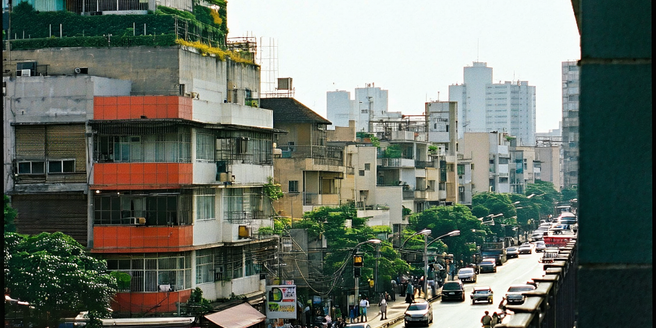
Understanding Urban Heat Islands
Urban heat islands (UHIs) occur when urban or metropolitan areas become significantly warmer than their rural surroundings due to human activities. The primary cause of UHIs is the modification of land surfaces through urban development. Materials like concrete, asphalt, and buildings store heat during the day and release it at night, leading to elevated temperatures. Moreover, the lack of vegetation and green spaces exacerbates these effects, reducing shade and evapotranspiration, both of which help to cool air. Understanding UHIs is crucial for urban planning as they contribute to increased energy consumption, higher emissions, and can affect human health. By studying UHIs, planners and policymakers can implement strategies to mitigate their effects, such as introducing more green spaces, reflective building materials, and cooling technologies in urban design.
The Role of Interactive Maps in Heat Studies
Interactive maps play a crucial role in advancing our understanding of urban heat islands. By providing dynamic visualizations of temperature data, these maps enable researchers and policymakers to identify heat-prone areas quickly. They combine satellite imagery, real-time weather data, and geographic information system (GIS) technology to create detailed representations of urban environments. These maps allow for the exploration of temporal and spatial patterns in heat distribution, making it easier to discern correlations between urban features and temperature variations. Interactive maps also facilitate the assessment of potential mitigation strategies, such as green roofs or tree plantings, by simulating their impacts on local temperatures. With user-friendly interfaces, these maps make complex data accessible to a broader audience, encouraging community engagement and informed decision-making in addressing urban heat challenges.
Technological Innovations in Map Design
Technological innovations in map design have significantly enhanced our capability to address environmental issues like urban heat islands. Modern interactive maps leverage developments in data analytics, artificial intelligence, and virtual reality to offer more accurate and user-oriented visualizations. AI algorithms can analyze massive datasets to detect patterns and predict future heat trends, which aids in proactive urban planning. Virtual reality allows users to immerse themselves in simulated city environments, offering a first-person perspective on potential changes and interventions. Additionally, cutting-edge software enables the integration of multiple data sources, including satellite and ground-level sensors, to provide a more comprehensive understanding of urban landscapes. These advancements not only improve the accuracy of heat studies but also enable the effective communication of findings, fostering collaborative efforts in urban sustainability.
Case Studies: Cities Analyzing Heat Data
Several cities worldwide have launched initiatives to analyze heat data using interactive maps, yielding valuable insights and actionable strategies. For instance, Los Angeles uses advanced GIS tools to map hotspots and prioritize areas for tree planting. By overlaying temperature data with socioeconomic factors, the city can target interventions where they are most needed, reducing heat exposure in vulnerable communities. Similarly, Melbourne has developed a spatial heat vulnerability index, combining land surface temperatures with population density data, to guide urban cooling policies. In New York City, interactive heat maps are employed to evaluate the effectiveness of green infrastructure projects, enabling real-time decision-making. These case studies highlight the transformative potential of interactive maps as cities grapple with the challenges of rising temperatures and the need for sustainable urban environments.
Benefits of Using Interactive Maps for Research
Interactive maps offer several advantages for research, particularly in the study of urban heat effects. They provide a visual representation of complex data, making it easier for researchers to identify trends and outliers. By integrating multiple data sources, such maps present a comprehensive picture of environmental conditions, facilitating a deeper understanding of heat dynamics across different urban settings. The interactivity allows users to zoom in on specific areas, examine temporal changes, and simulate various scenarios, which enhances analytical capabilities. Furthermore, interactive maps foster collaboration by enabling researchers, policymakers, and the public to share insights and data effectively. This collaborative approach is crucial for developing and implementing targeted strategies to mitigate urban heat, thus contributing to more sustainable urban planning and management practices.
Future Trends in Mapping Urban Heat
Looking ahead, the future of mapping urban heat involves embracing cutting-edge technologies and methodologies to gain richer, more detailed insights. The integration of machine learning with geographic information systems is expected to enhance predictive modeling of heat patterns, enabling more accurate forecasts and proactive measures. Advances in remote sensing technology, including the use of drones, will provide higher resolution data, capturing micro-level variations in urban heat. Moreover, the development of participatory mapping platforms will empower citizens to contribute observations, creating a more dynamic and inclusive dataset. Augmented reality applications could also transform how stakeholders interact with heat maps by overlaying data onto physical environments in real-time. These trends signify a shift towards more interactive, accurate, and community-driven approaches in addressing the challenges posed by urban heat islands.
